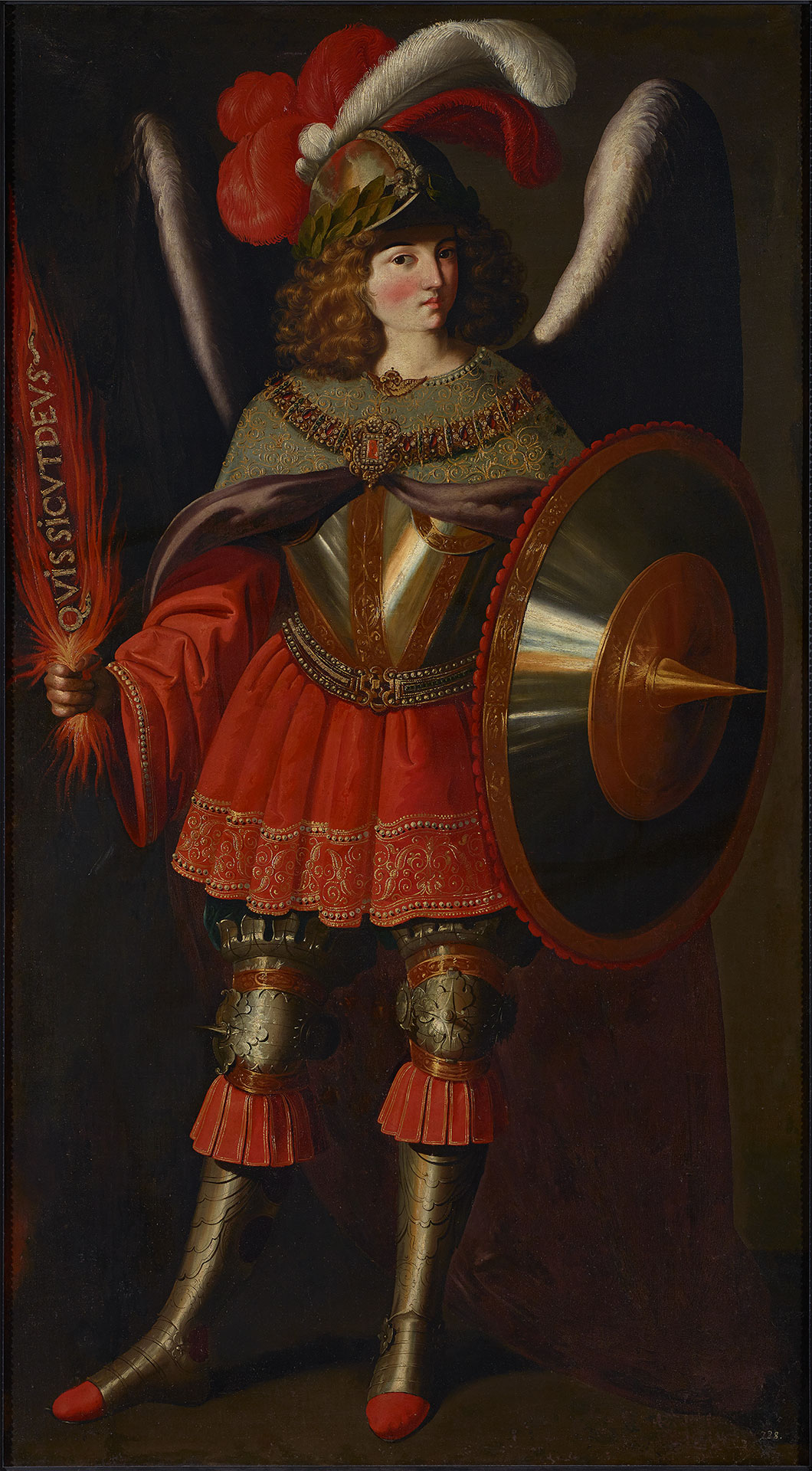
Francisco de Zurbarán (Badajoz, 1598 – Madrid, 1664)
The Archangel Michael
circa 1645–1650
WORK INFORMATION
Oil on canvas, 224 x 126 cm
Trained in Seville in the workshop of an unknown master, Pedro Díaz de Villanueva, Francisco de Zurbarán is inevitably associated with commissions from monastic orders. In order to paint the great programmatic cycles he was hired to make between 1626 and 1630—including one for the Dominican Monastery of San Pablo, another for the convent of the Calced Mercedarians and a third devoted to the life of Saint Bonaventure for the Franciscan school—he had to move from the town of Llerena in Extremadura, where he had settled in 1617, to Seville, where sources indicate he arrived with a fully-formed workshop. At the same time he was producing an important number of works destined for the New World, resulting in several commissions of considerably poorer quality. His contribution to the decoration of the Hall of Realms at the Palace of El Buen Retiro, commissioned by the Count-Duke of Olivares, and his subsequent work for the Carthusian monastery in Jerez and the Monastery of Guadalupe marked the high points of his career. His move to Madrid in 1658 was probably motivated by a desire to seek new clients once Murillo appeared on the scene.
The Young Virgin Asleep is Zurbarán's first work on this theme, which became famous thanks to two other extant autograph versions, painted late in his career and of even greater quality, if possible, than the first, with softer, more nuanced colour tones. This is evident in the piece held in a private Parisian collection and the other, with some variations, at the Cathedral of Jerez, which after its recent cleaning has been revealed as Zurbarán's most exquisite version; its sublime excellence proves that even in his final years, the artist was able to improve upon and surpass the compositions of his youth. The girl Mary adopts a similar pose leaning on the wicker-seat chair in all three versions—only her sleeping face with closed eyes varies—and they all include the book on her lap and the glowing halo of cherubs round her head, creating an intimate atmosphere conducive to inner contemplation. The restoration of the Banco Santander canvas revealed the clean, solid lines of the contours and volumes and the broken folds typical of Zurbarán's early draperies that appear in some of the versions of The House of Nazareth. This confirms the sensibility and keen eye of Pérez Sánchez, the first to defend the originality of this painting by dating it to the years around 1630–1635. The incredibly intimate iconography can be associated with the visions of Mother Mary of Agreda (1602–1655), who commented on details of the Virgin's life: "her prayers were constant, even in sleep, for understanding does not require the operation of the senses", in allusion to the verse that says "I slept, but my heart was awake" (Song of Solomon 5:2). The source of this iconography identified by Delenda may also be Anton Wierix's engraving of Jesus Sleeping Peacefully, from the series entitled The Human Heart Vanquished by the Infant.
The Archangel Michael, on the other hand, is the prototype created by Zurbarán that was copied by both his workshop assistants and other artists who imitated his models for export to the New World. It depicts Michael, prince of the canonical archangels, who with Raphael and Gabriel completes the trio of "principal and only messengers recognised by the Church, being intermediaries between divinity and humanity and whose orders the angels obeyed". He is dressed in the manner described by Francisco Pacheco in his Arte de la Pintura, "with Roman arms and mail", and holds in his hand a flaming sword with the inscription Quis sicvt devs (Who is like God?), the words which, according to legend, Michael uttered upon casting Lucifer out of heaven. The connection between this type of artwork and religious theatre, including Spain's unique autos sacramentales, is made clear in a painting at the Cathedral of Seville, which shows The Procession of the Virgen de los Reyes (Our Lady of the Kings) with hangings and angels and archangels that repeat this model. The flaming sword and the angel's shield, helmet and embroidered skirt all evidence the outstanding quality of this painting, which must be considered the model for all subsequent versions. [Benito Navarrete]

